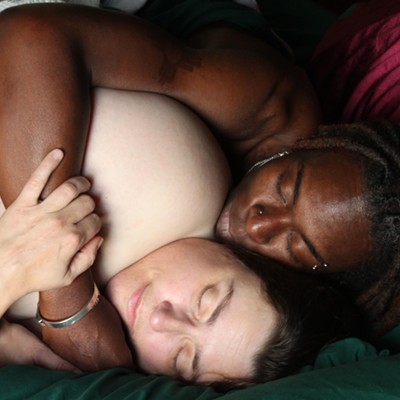Roselia was an early example of what Republicans call a "faith-based initiative."
The Roselia Home, Foundling Asylum and Maternity Hospital -- as it was originally known -- was a Catholic-sponsored haven for poor or unmarried women to give birth to their children and put them up for adoption. It was also a place to house "foundlings," infants left by their parents in a basket. The hospital was staffed by doctors and nuns from the Sisters of Charity, and it was founded in 1891 by one Charles Donnelly, who named the center after his wife. No doubt she'd have appreciated the gesture even more if the hospital didn't serve unwed mothers living lives of 19th-century shame.
Indeed, the hospital was controversial from the outset. Sara Killikelly, whose 1907 book History of Pittsburgh calls it the "Rosalie [sic] Home," wrote, "The institution met much opposition from some people, who perhaps justly claimed that an institution of this kind is unwise." Apparently, there was some concern about encouraging illegitimacy by coddling infants too much. See, if you allow a safe place for illegitimate children to be born, then more babies could choose to be illegitimate. Keeping them out in the cold was good for them in the long run. It's compassionate conservatism, 1890s-style.
But as Killikelly wrote, "[E]ven if the kindly women in charge are accused of being lenient, Christ Himself was lenient to the woman who repented, and the care of these unfortunate little ones must surely appeal to every member of the community."
The hospital seemed to have a hard time settling down itself: Having started out on Forbes Avenue in Oakland, it moved to the corner of Cliff and Manilla streets in the Hill District before relocating to Bedford Avenue and, finally, returning to Oakland's Clyde Street. And over the years the center provided more and more services; by 1950, it was providing tonsillectomies, pre-natal and post-natal care and training, and placement for adoption. Still the quarters were spartan: Visits from males were prohibited; only one woman visitor was allowed after delivery of the baby. Women were allowed a small radio, but were allowed only to carry pocket change, which they could spend on "stamps, telephone, candy bars, [and] cigarettes." (Apparently pre-natal care wasn't as advanced as it is today.)
But the hospital did provide such entertainments as bingo games, knitting circles, and even some rudimentary career skills, like taking shorthand. Mass was performed at the center; the hospital insisted that attendance was "purely voluntary." And as one anonymous patient of the center later recalled in a 1961 commemorative booklet, in staying at the center, "I learned the necessity of living peacefully with a group of girls of all ages, colors, creeds, and backgrounds, knowing that none of us were any better or worse than the other."
A sweet sentiment, isn't it? If only someone could get Ariel Sharon and Yasser Arafat knocked up.
In 1961, the director, Sister Regis James, fretted that while "In the early days ... the girls were older than they are now," these days "we are dealing with girls in their early teens -- girls still of high-school age. Occasionally, we have even had girls from our elementary and grammar schools." No doubt all that rap music was to blame: As a Catholic priest observed -- in 1961! -- "A society which insists on unbridled freedom and unsupervised entertainment for its young people, which promotes glossy romance ... must somehow care for those who are burned thereby."
At any rate, the center prospered. At its height, it had the capacity for 65 women and 75 babies. And in one year, 1953, it delivered 250 infants while accepting another 53 for boarding -- putting them up until they could be placed for adoption. In all, the center served some 279 women for delivery and post-natal care that year. And because Catholics keep score of this sort of thing, we also know that of those women 161 were Catholic, 118 Protestant. (Go Catholics!)
But as maternity care grew more expensive, a larger number of mothers came in simply because they couldn't afford to deliver a baby anywhere else. In 1953, the hospital's annual report says, 101 mothers came in for delivery -- mostly from its Hill District neighborhood -- and "generally took their babies home." The price? A mere $100 to deliver your baby in the care of experienced medical staff. These days, you can't get a refrigerator delivered for that.
But by 1953, the home was turning over more of its functions to Catholic Charities and other non-religious groups. The home finally shut down in 1970, but with the Bush Administration in power, perhaps we'll soon see the return of the faith-based tonsillectomy and early 1960s values.










